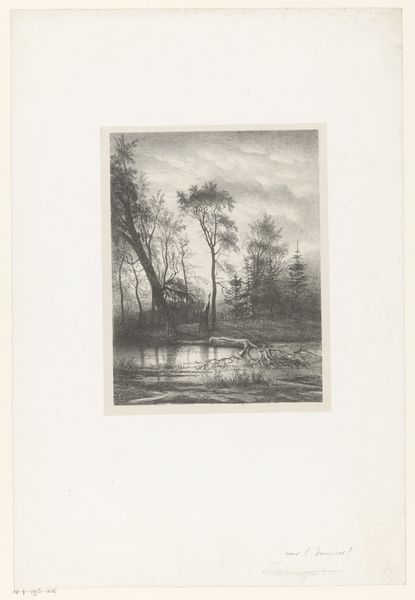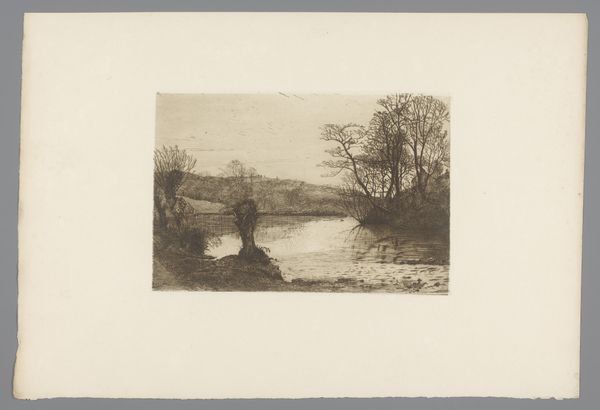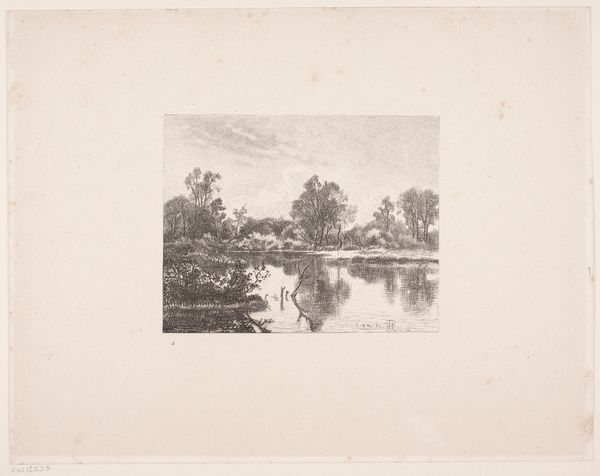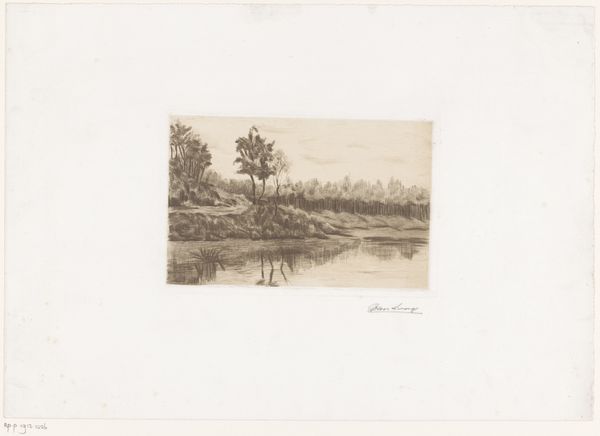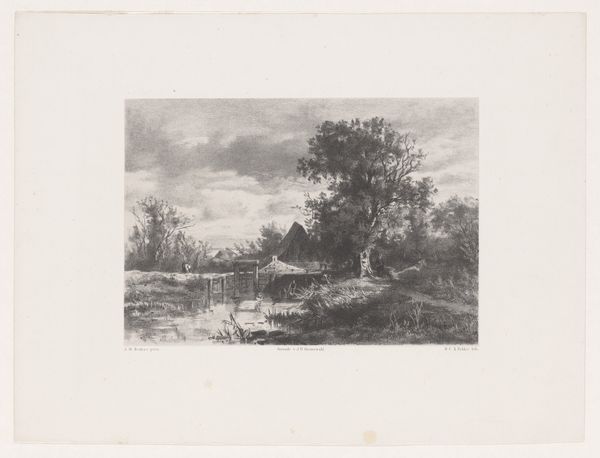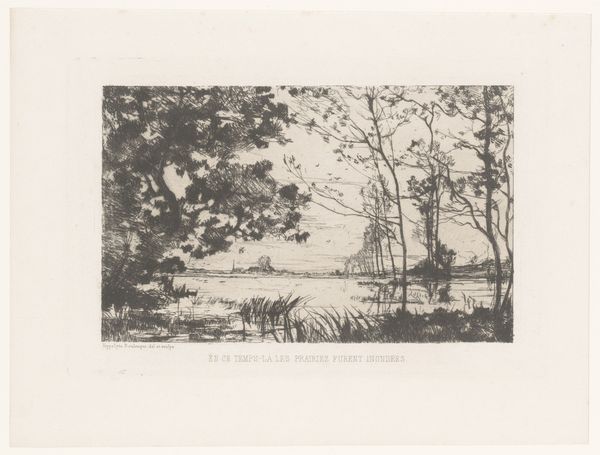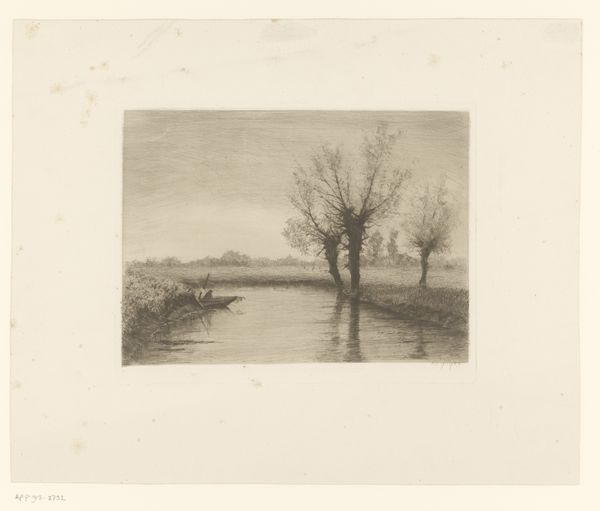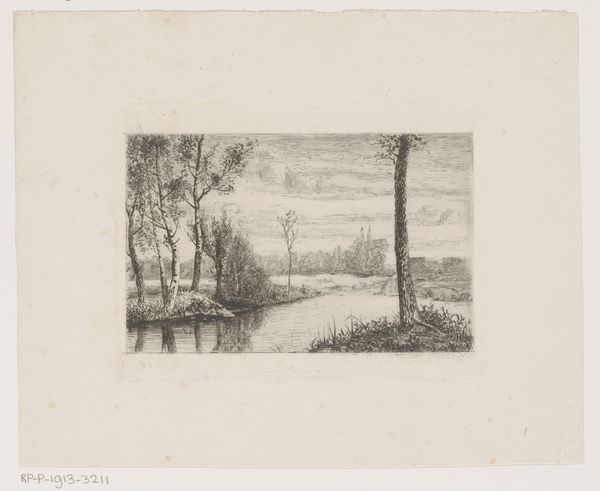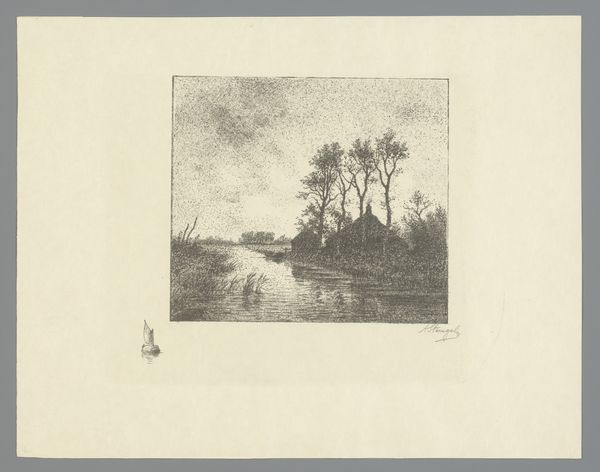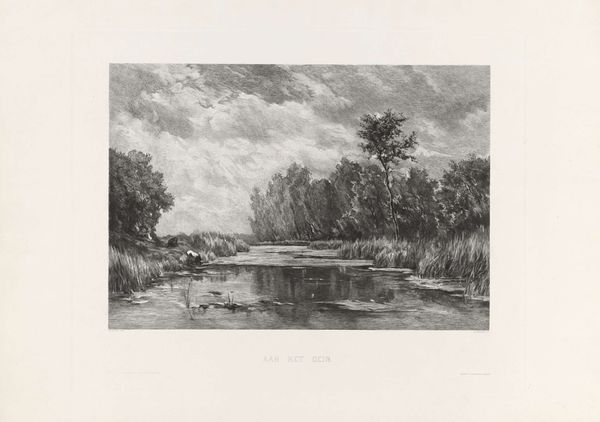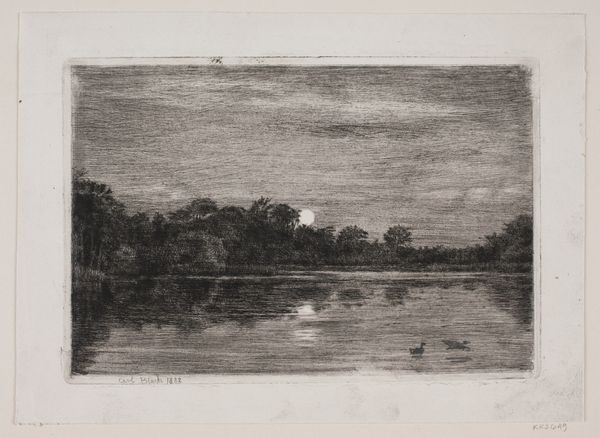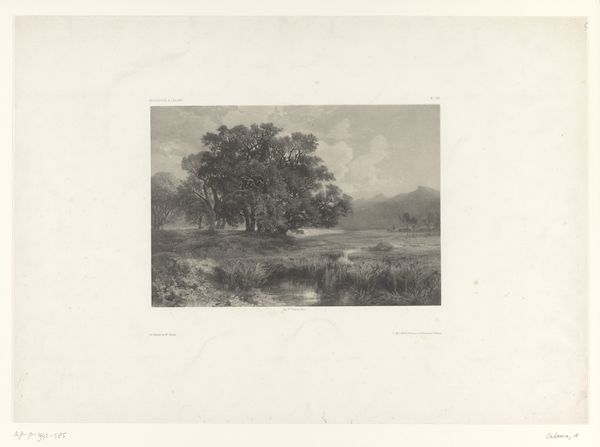
Dimensions: height 138 mm, width 211 mm
Copyright: Rijks Museum: Open Domain
Curator: This print, entitled "Zonsondergang in Ierland," or "Sunset in Ireland", was etched by Sir Francis Seymour Haden in 1863. It is currently held in the collection of the Rijksmuseum. Editor: The tonality really strikes me—such moody grays! It makes me feel a deep sense of tranquility, a somber acceptance of the end of the day. Curator: It’s a quintessential example of romantic landscape, channeling an idealized, perhaps even melancholy, view of nature, in keeping with its socio-political milieu. One must consider the influence of the romantic movement on the perception and the popular imagery of landscape. Editor: Notice how the river bends, almost serpent-like, through the composition, carrying symbolic weight of time and journey's end. Rivers often represent the unconscious mind in visual symbology. It seems fitting to associate the symbol with this visual image of a sunset as the sun and its day journey sets along the horizon. Curator: Indeed. Also of interest is the fact that Seymour Haden, though trained as a surgeon, became a key figure in the etching revival. His contributions were part of a larger democratization of art in society, as printmaking became increasingly accessible. Editor: Beyond that, look at the textures. The soft, blurred lines used to depict the distant horizon contribute to the sunset’s emotional feeling. It nearly dissolves, giving a sensation of disappearance or moving to another plane of existence. Curator: The symbolism could allude to broader historical anxieties. England, at that moment, underwent industrialization and urbanization and perhaps artists like Seymour Haden looked at rural landscapes like this, a visual expression of national pride as an antidote, a safe haven. Editor: What's beautiful is that whether understood consciously or not, the visual cues trigger deeply ingrained responses. The piece resonates, centuries later, reminding us of our place within the cycles of nature. Curator: It is art's role in society: to shape perceptions and to reveal those values, generation after generation. Editor: It truly captures a timeless feeling through those swirling, fluid lines and the image of nature that resonates with deep emotions.
Comments
No comments
Be the first to comment and join the conversation on the ultimate creative platform.
